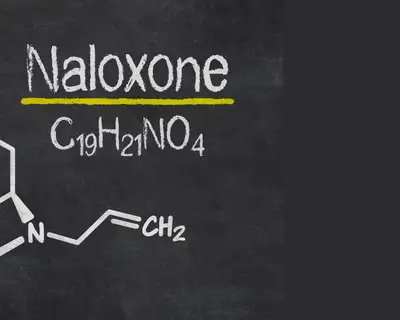RESEARCH TRIANGLE PARK, NC – In response to the opioid crisis that is currently claiming lives across the country at an alarming rate, a new study by scientists at RTI International, the Network for Public Health Law, and the Harm Reduction Coalition suggests state-level naloxone laws have facilitated the establishment of overdose education and naloxone distribution (OEND) programs throughout the United States. Typically operated by public health and nonprofit organizations, OEND programs train laypeople who are at high risk of experiencing or observing an overdose as prospective responders in overdose events by providing naloxone access and directions for medication delivery. Naloxone is a medication that reverses opioid overdoses and prevents deaths if administered in time, and OEND programs are an effective delivery system for getting naloxone to people who need it most.
“Our findings show that states that enacted laws to improve naloxone access observed significantly higher levels of OEND implementation within them,” said Barrot Lambdin, PhD, RTI senior implementation scientist and lead author of the study. “However, we observed that only 8% of counties in the United States had OEND programs at the time of this study”
The study examines whether state-level naloxone laws stimulated implementation of OEND programs in the U.S. from 2000 through 2014. Highlighted findings and discussion from the study include:
- States with laws that protect providers who prescribe and distribute naloxone from potential legal action, remove the requirement for medical staff to be on-site for naloxone distribution and/or protect OEND program recipients from legal action for possessing naloxone observed significantly higher levels of OEND implementation within them.
- States that had naloxone laws or specific provisions in place for longer periods of time had significantly higher levels of OEND implementation within them.
- Only 8% of US counties had implemented OEND programs by the end of the study, suggesting that OEND programs are an underutilized method for distributing naloxone.
- Initiatives to understand how best to catalyze the implementation of OEND within different service settings will be critical to addressing the ongoing opioid overdose epidemic.
“While our results suggest that the laws passed by some states to remove legal barriers to OEND implementation did, in fact, result in the implementation of naloxone distribution programs, other approaches will likely be necessary to ensure that implementation meets the need, given the rapid spread of opioid overdose mortality in the U.S.,” added Lambdin. “Our data show that there were large regions of the country with a high burden of overdose mortality but without OEND programs.”
The study was conducted and funded by RTI International.

- New study suggests state-level naloxone laws have facilitated the establishment of overdose education and naloxone distribution (OEND) programs throughout the United States
- States with laws that protect providers who prescribe and distribute naloxone from potential legal action, remove the requirement for medical staff to be on-site for naloxone distribution and/or protect OEND program recipients from legal action for possessing naloxone observed significantly higher levels of OEND implementation within them
- States that had naloxone laws or specific provisions in place for longer periods of time had significantly higher levels of OEND implementation within them
RTI International Media Relations: